INTERN SI UX FALLS



















Internships serve as a low-cost training and development program










Interns are effective public relations ambassadors and convey positive messagesabout organizations
Internships provide a continuous pool of highly-qualified students to recruit

Interns tend to increase regular employer productivity and motivation, and improve work climate
Interns are enthusiastic, provide new ideas, and provide fresh perspectives
Give interns responsibilities and ensure they understand that people are counting on them
Interns should feel integrated into their departments, be part of the team, and develop a sense of community.
Allow and encourage interns to participate in professional development sessions, community engagement projects, or recruitment efforts.
Communicate the importance of feedback by being open and approachable. Have the same feedback protocol for interns as full-time employees and ensure interns know that their feedback is valued
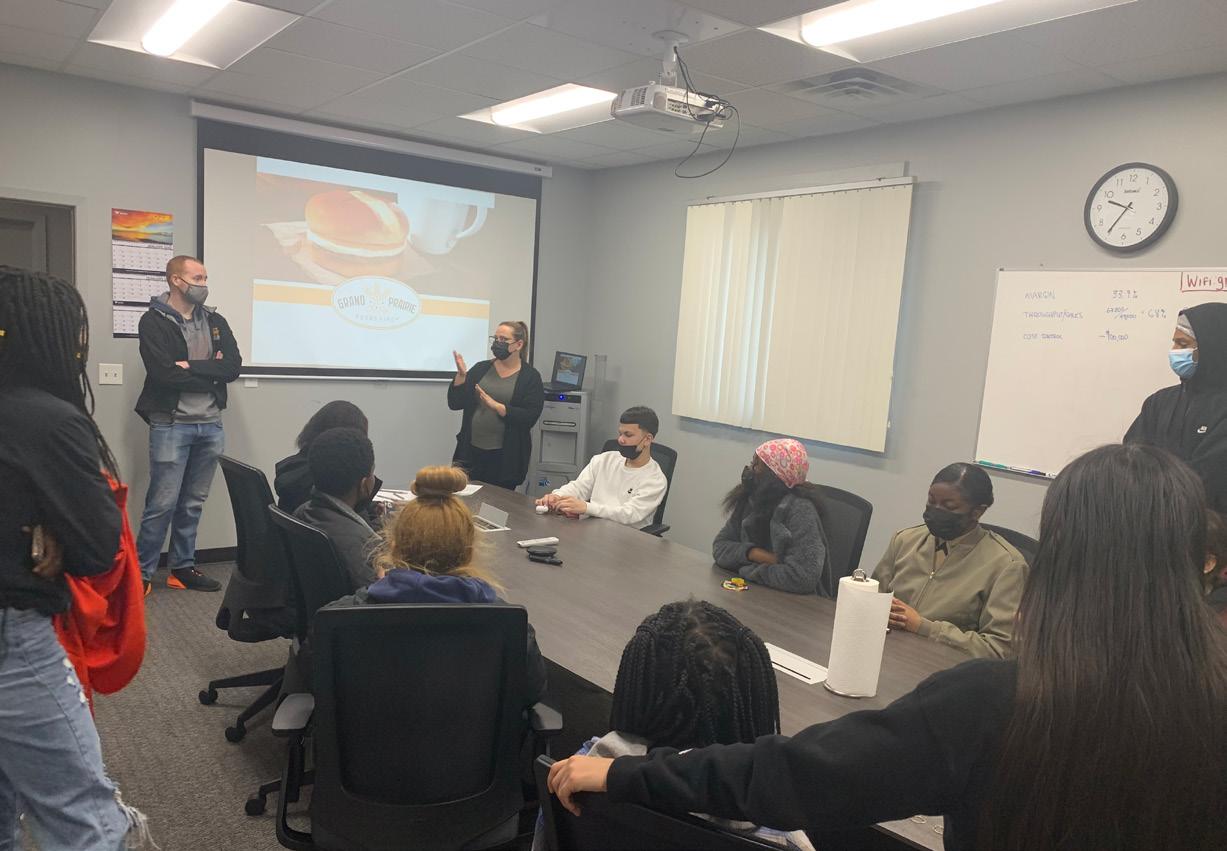
Interns should receive consistent feedback, originated in goal-setting and completed by outcome evaluation.
Assign interns a mentorsomeone they can go to who is more accessible than a director or supervisor.
Applies learning experiences to knowledge gained in the classroom.
Teaches skills or knowledge that can be transferred to other employment settings.
Includes resources, equipment, and facilities provided by the host employer to support learning goals.
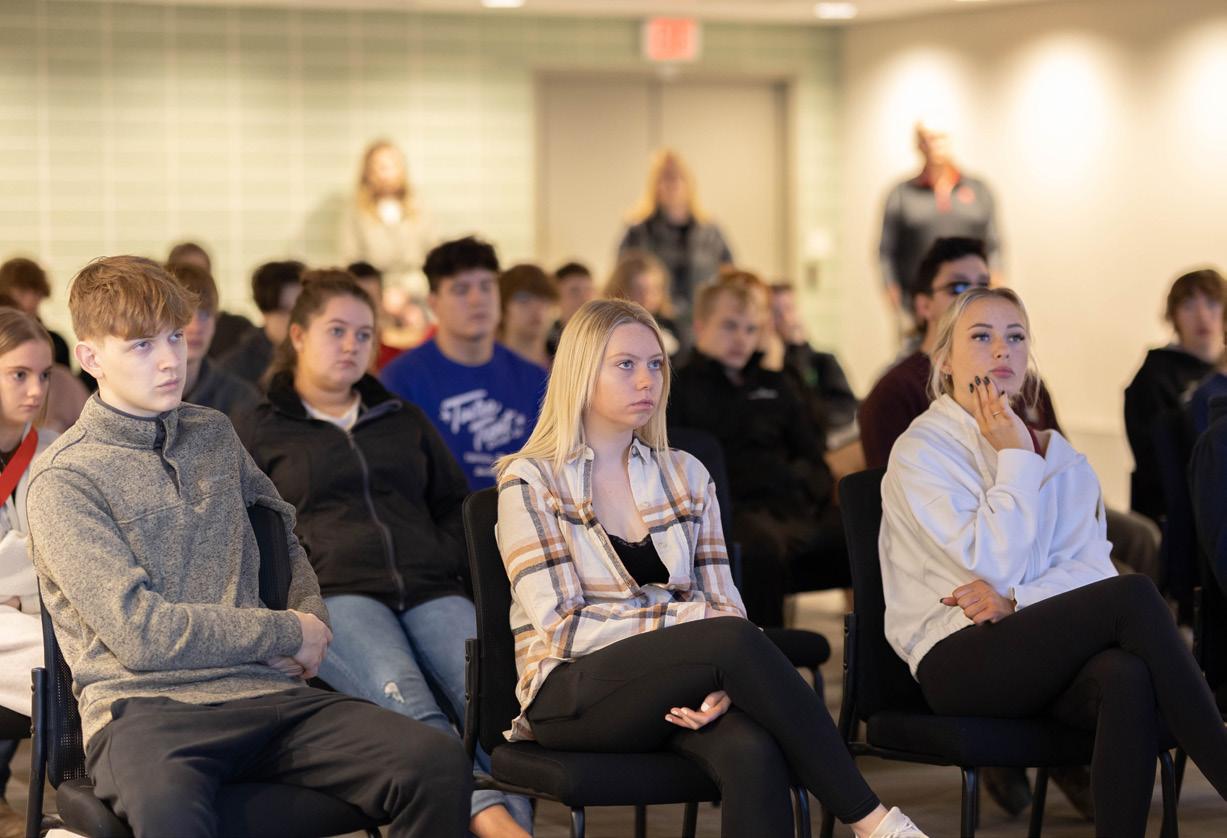
May be paid, credit-bearing or non-credit bearing experience.
Provides supervision by and routine feedback from a professional with expertise in the field.
Has a defined beginning and end, and a job description with desired qualifications.
Job Shadow
•
1-3 week immersive experience exploring career ladders and pathways.
6-10 week project-based experience requiring advanced knowledge and skills.
• Define organization need/problem for students to present and demonstrate.


• Part-time employment opportunities during academic year requiring advanced knowledge and skills.
Organizations should use early intern and job shadowing experience as a talent pipeline onramp for sophomores.
Professional entry-level experience gained as a junior and senior reduces the onboarding time and new hire training time.

It is up to the employer to decide if and how much interns will be paid. Most determine pay based on student class level and types of responsibilities.
Students may seek both credit-bearing and non-credit-bearing internships. Credit-bearing means that college student will use internship experience towards graduation requirements. Under this circumstance, employers are encouraged to connect with resources on campus to ensure all requirements are being met for the student.
For non-credit-bearing, employers do not need to report hours or wages earned.

An F-1 visa is granted to a person coming to the United States to attend a college, university, seminary, conservatory, academic high school, elementary school, or other academic institution or language training program approved by the U.S. Attorney General for study by foreign students. The visa holder plans to return home after completing studies. This is the most common non-immigrant visa for an international student attending undergraduate and graduate school.
The J-1 visa is often used by faculty and researchers but can be used by international students if there is a special sponsorship relationship with an American or foreign governmental agency, private institute, or university. This visa is normally used for students only when there is a very specific academic objective involved and when there are fairly definite plans for the students applying their U.S. education in their home country. Students on the J-1 may be subject to a two-year “foreign residence” requirement.
Before hiring an intern, it is imperative to give careful thought to the internship or internship program. Start by answering the following questions:
align with your hiring and talent needs?
Organizations hire interns for a myriad of reasons. Using the reasoning behind creating the internship itself may speak to activities, ongoing work and/ or projects that interns will work on.
How will the intern be compensated?
Internships may be paid or unpaid. Determine ahead of time if you will be able to compensate your intern and how/how much.
Mentorship and supervision are crucial to optimize experiences for interns and program success. Before establishing an internship or program, consider who these key employees will be and how they will manage including this new responsibility into their workday.
Internships have predetermined beginning and end dates. Most commonly these align to the academic calendar. Determine the timeline and plan out various activities or milestones within these dates to ensure interns have a thorough understanding of your expectations.
Developing an internship program takes careful planning and discussion. Coming to a consensus on program goals that are understood by all involved is critical. Formalizing an internship or internship program with written goals, expectations, and outcomes proactively addresses the concerns and needs of management, staff, and students.
Carefully write out the internship program with a plan and goals. Internship goal completion should be measured by the organization. Structuring the internship ahead of time provides tangible goals and objectives that will enable providing proof to organization decisionmakers regarding the importance and value of a well-developed internship program.

We partner with South Dakota Association of Career Counseling Centers and Handshake to help your organization find the right talent.

What is South Dakota Association for Career Counseling Centers? South Dakota’s association for career counseling centers.
What is Handshake? Handshake is the largest post secondary association dedicated to college students and alumni.

How will it help your organization? You can recruit students and alumni nationally. The SFDF has created a network of nearly 3M college students. We will help you source the early career talent your organization needs now and in the future.
What does your organization need to get started?
We have created a simple Google form to identify how we may help. Please click here to fill out the form: Talent
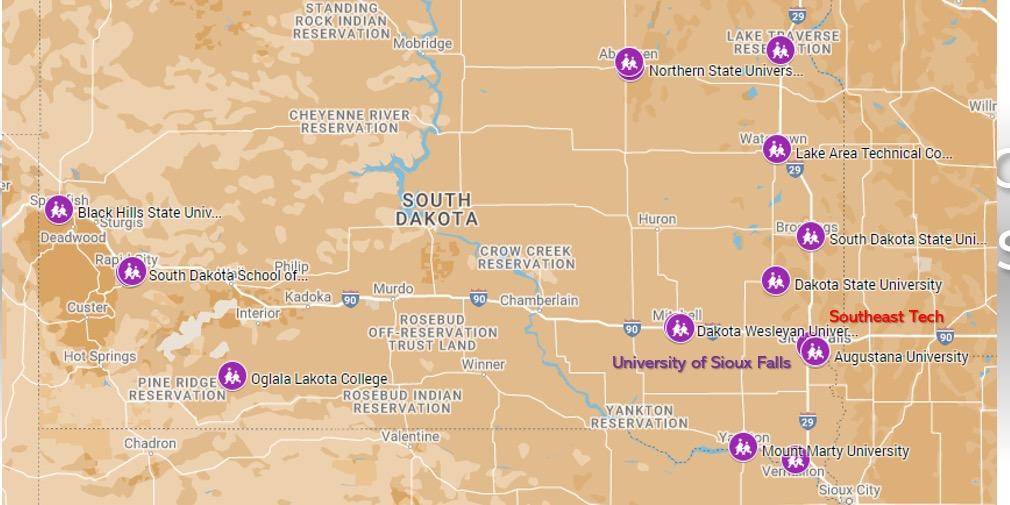
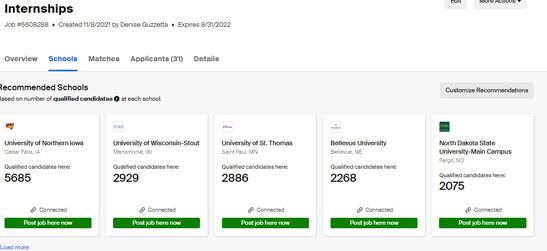

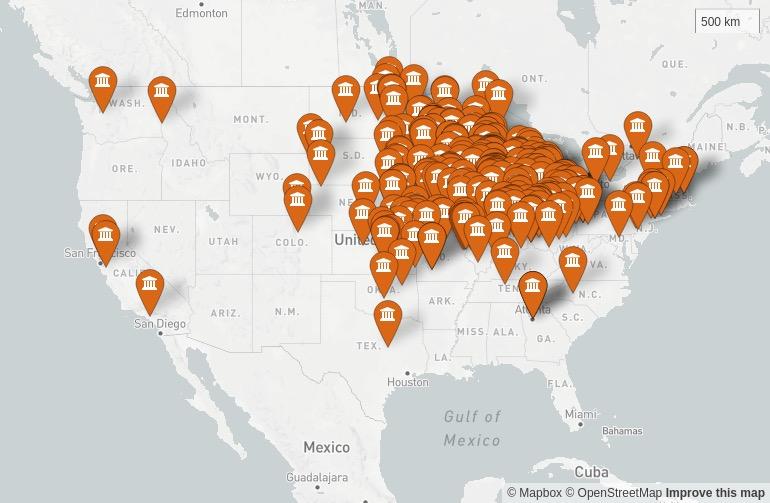
The start of an internship are often its defining days. When interns are given their first projects, they are being signaled what can be expected in the future. If they are given nothing or very little to do, it sends a message that this job will be easy — and boring. Interns don’t want that, and of course, neither do employers.
The organization of an internship program will likely be the single most important influence on an intern’s impression of their employer, and thus the chances that he or she will come back or choose to work with them post-graduation.
The sooner interns understand what an organization does and how it operates, the sooner they can assume assigned responsibilities and become productive.
Welcome and discuss orientation plan for the day and week.
Give a tour of the facilities including where lunch can be stored, bathrooms and parking info.

Introduce interns to other staff members.
If you have an electronic newsletter, include a picture, brief bio and information about what the intern will do for your organization.
Review goals/expectations for intern position and establish an initial work plan.
Have intern complete a Learning Agreement and set up a time to review it.
Is there any industry language or best practices for interacting with clients that interns should be familiar with?
Include interns in staff meetings when appropriate and allow for them to give updates on their progress.
Share your organization’s mission statement and goals.
Provide an organizational chart. Describe your organization’s commitment to equity and diversity, such as stating your organization’s values, what affinity groups you have, and other related equity and inclusion initiatives.
Provide time for the intern to review your website, program information, or other relevant resources connected to their work.
Have interns complete any confidentiality, sexual harassment or antidiscrimination training other employees are required to complete.
Safety plan and emergency exit plan.
Provide interns with information regarding appropriate work attire and behavior.
Review logistical information such as hours, breaks, attendance and punctuality and how to fill out timesheets.
Arrange for training, as necessary, on computer programs, telephone systems, copy and other equipment the interns will be using.
Review organizational and employee policies.
Set up regular check in meetings with supervisor.
Establish who the intern can go to with problems, questions or concerns if their supervisor is unavailable.
Connect intern to both other interns and/or a mentor.
Provide information about how to engage with any affinity groups at your organization.
Campus housing is available for students during the summer dates listed above for: • Students enrolled in USF summer school and internships • Students working a minimum of 20 hours per week for a department on campus • All other students

• Work with the intern to create objectives and goals
• Take interns on a tour of the facilities and introduce them to other employees
• Schedule regular one-on-one meetings or “check-ins” to give and receive feedback
• Give interns opportunities to observe or participate in professional meetings
• Allow and encourage interns to interview company personnel
• Discuss career interests and pathways
• Assign a business mentor
• INTERN to the Young Professionals Network at the Greater Sioux Falls Chamber of Commerce
Review organization goals as well as intern goals/requirements on a regular basis. In the beginning of an internship, more frequent meetings may be helpful to both employer and intern.
Evaluation processes may differ and may be formal or informal depending on organization culture and structure.
There are similarities that both interns and internship supervisors have in the evaluation process:
• Review the internship position description and ensure goals are being met
• Review tasks and assignments and clarify expectations
• Ask the intern to evaluate their experience and accept feedback on concerns and successes
• Written evaluations by both intern and employer can also provide the opportunity to publicize the success of your internship program to management and to potential interns
Exit interviews are a great resource for revealing strong insights into a company.
Questions to ask during an exit Interview:
High school or early college talent:
• How would you describe our company culture?
• What would you change about your internship experience?
• What, if anything, about the company as a whole?
College juniors and seniors:
• How did the jobs and career pathways match your expectations?
• How can we help you get to the next step in your career?
As an experienced professional, you can offer valuable insight into the student’s personal, professional, and career development. Please consider the following questions:
Given your experience working with student interns and your expectations about the internship position, how would you rate this student overall at the beginning and end of the internship?
Please use the following scale: 1 = Unsatisfactory 2 = Improvement Needed 3 = Meets Expectations 4 = Exceeds Expectations 5 = Outstanding
At the beginning of the internship
At the end of the internship
What development have you noticed in the student’s abilities, knowledge, personal, and/or professional performance?
What major strengths of the student did you observe during the internship?
What would you recommend for this student to do following this experience to make him/ her better prepared for this profession and the workplace (e.g., courses, activities, skills development)? Please be specific.
If you had a full-time position involving the kind of work done at the internship, would you hire this person for the position? Why or why not?
Do you have any additional feedback you would like to offer your intern on their primary projects or tasks at the internship?